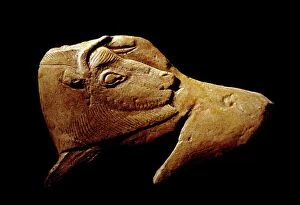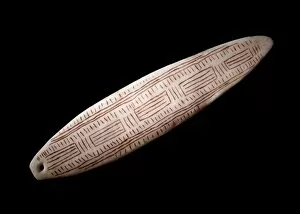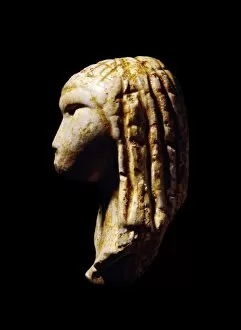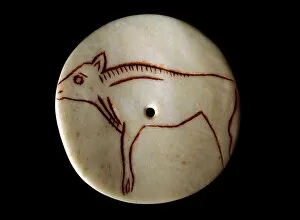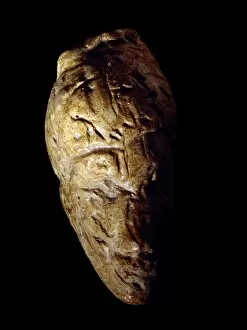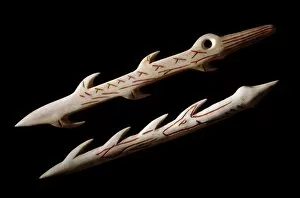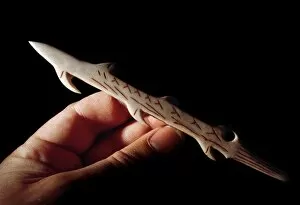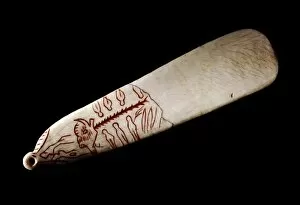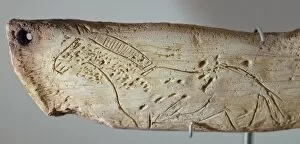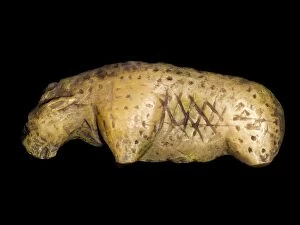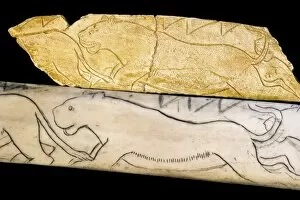Mobiliary Art Collection
"Exploring the Ancient Artistry of Mobiliary Art: Unveiling Stone Age Treasures" Step back in time and immerse yourself in the captivating world of mobiliary art
For sale as Licensed Images
Choose your image, Select your licence and Download the media
"Exploring the Ancient Artistry of Mobiliary Art: Unveiling Stone Age Treasures" Step back in time and immerse yourself in the captivating world of mobiliary art, where ancient civilizations left their artistic mark on small portable objects. From the iconic Venus of Willendorf, a Stone Age figurine symbolizing fertility and life, to intricate stone carvings from the Magdalenian culture like C014 / 2411, these artifacts offer glimpses into our ancestors' creativity. Delve deeper into this artistic journey with fascinating finds such as the Stone Age bullroarer and harpoon from the Magdalenian period. These tools not only served practical purposes but also showcased an exquisite craftsmanship that has stood the test of time. Witness prehistoric mastery through carved horses found in Vogelherd Cave (C015 / 6740) and intricately crafted birds discovered in Hohle Fels cave (C015 / 6741). These remarkable pieces demonstrate how early humans transformed raw materials into stunning representations of nature's beauty. The Venus of Brassempouy takes center stage once again as another testament to Stone Age artistry. This delicate carving portrays a human face with remarkable detail, reminding us that even thousands of years ago, artists sought to capture human form with precision. Marvel at other notable creations like bone discs from Magdalenian culture (C014 / 2410), showcasing both decorative patterns and functional design. And let us not forget about yet another breathtaking representation of femininity - the Venus of Dolni Vestonice - which further emphasizes humanity's fascination with female figures throughout history. Lastly, we encounter magnificent harpoons used by our ancient counterparts during hunting expeditions. The skillful craftsmanship behind these weapons highlights their importance for survival while simultaneously revealing an appreciation for aesthetics within everyday objects. As we explore mobiliary art's rich tapestry woven across millennia, we gain a deeper understanding of our ancestors' artistic ingenuity.


